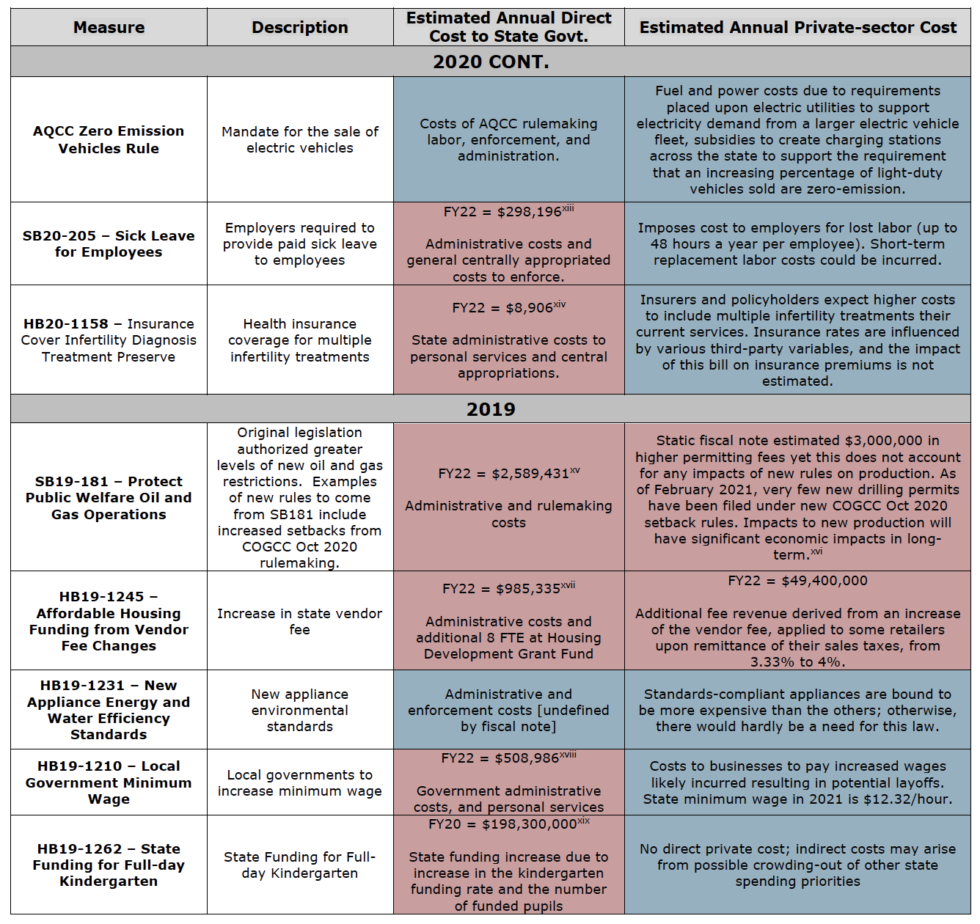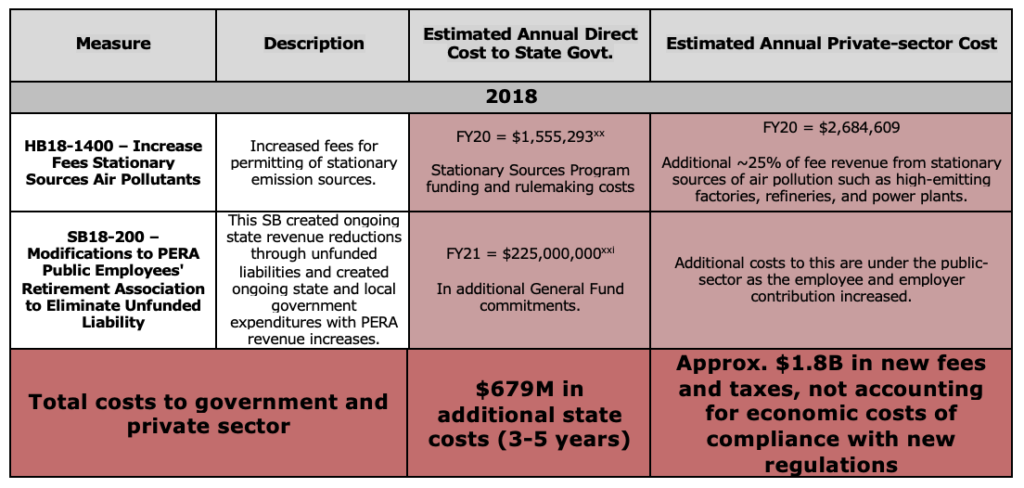Introduction
Prior to 2020 and the global economic and cultural upheaval caused by the COVID-19 pandemic, Colorado stood out for having strong economic growth and offering a desirable lifestyle. Coloradans had created the #1 state economy and enjoyed competitive advantages in attracting business growth and an educated workforce. In fact, in late 2019, US News World Report ranked Colorado’s business climate as one of the best in the nation.
However, after two periods of negative economic shocks in 2020, in both late spring and through the holidays, the state of business in Colorado remains under duress.
- There were 150,000 fewer jobs in Colorado in December 2020 relative to the start of the years, representing a 5.4% cut.[i] While the statewide reduction is significant, it masks the disproportionate impacts across industries, as the leisure and hospitality industry was down 90,900 jobs by end of 2020, whereas professional and business services was up 7,100 jobs.[ii]
- State taxable sales were down $8.9B, or -1.35%, in 2020 relative to 2019.[iii] Small business suffered, especially. As of February 10th, small business revenue was down 29.5% from January 2020 levels.[iv]
- Colorado’s unemployment rate increased by the 2nd-most among all states, from 2.5% to 8.5%. The Colorado state unemployment ranking went from near first (4th) to almost last (48th).[v]
With COVID-19 vaccinations quickly increasing there is an opportunity to be optimistic, however, public health experts warn that surges in cases and hospitalizations later in the years may require renewed restrictions. This uncertainty over the next year is coupled with significant unemployment insurance tax increases and other regulatory cost increases that will shape the ability of the Colorado economy to recover more quickly.
- Unemployment insurance taxes are projected to increase by over $500 million, or 84% within next two years. This does not include the interest charges businesses will be assessed to repay loans the State of Colorado received from the federal government to keep Colorado’s unemployment insurance program solvent. Colorado is one of only nineteen states with outstanding federal loans. And given the way premiums rates and the taxable wage base are scheduled to change, the UI tax increase will be even greater in years just beyond the current forecast.
- The cumulative cost of new taxes and fees will be approximately $1.8B per year within the next 3-5 years. This does not include the costs to businesses and households to comply with new regulations and legislation which don’t have full cost estimates yet: these measures include mandatory coverage of sick leave; increased health insurance benefit coverage; full costs of oil and gas regulations, and multiple layers of mandates to reduce emissions under HB19-1261. Below is a summary of costs of new regulations, taxes and fees.
Table of Recent Legislation and Policy Changes Which Will Impact the Costs of Doing Business and Living in Colorado



End Notes
[i] https://www.bls.gov/data/
[ii] https://www.bls.gov/data/
[iii] https://cdor.colorado.gov/retail-sales-reports
[iv] https://tracktherecovery.org/
[v] https://www.bls.gov/data/
[vi] https://leg.colorado.gov/publications/forecast-december-2020
[vii] http://leg.colorado.gov/sites/default/files/blue_book_english_for_web_2020_1.pdf
[viii] https://commonsenseinstituteco.org/proposition-118-a-statewide-paid-family-and-medical-leave-program-for-colorado-but-at-what-cost/
[ix]https://leg.colorado.gov/sites/default/files/documents/2020A/bills/fn/2020a_hb1420_f1.pdf
[x] https://leg.colorado.gov/sites/default/files/documents/2020A/bills/fn/2020a_sb215_f1.pdf
[xi] https://leg.colorado.gov/sites/default/files/documents/2020A/bills/fn/2020a_sb207_f1.pdf
[xii] https://commonsenseinstituteco.org/the-inherent-tradeoffs-in-amendment-b/
[xiii]https://leg.colorado.gov/sites/default/files/documents/2020A/bills/fn/2020a_sb205_f1.pdf
[xiv]https://leg.colorado.gov/sites/default/files/documents/2020A/bills/fn/2020a_hb1158_f1.pdf
[xv]https://leg.colorado.gov/sites/default/files/documents/2019A/bills/fn/2019a_sb181_f1.pdf
[xvi] https://commonsenseinstituteco.org/senate-bill-181/
[xvii]http://leg.colorado.gov/sites/default/files/documents/2019A/bills/fn/2019a_hb1245_f1.pdf
[xviii]https://leg.colorado.gov/sites/default/files/documents/2019A/bills/fn/2019a_hb1210_f1.p
[xix] https://coloradosun.com/2020/01/08/full-day-kindergarten-colorado-cost/#:~:text=That%20means%20the%20additional%20cost,8.4%25%20more%20than%20was%20budgeted
[xx]https://leg.colorado.gov/sites/default/files/documents/2018A/bills/fn/2018a_hb1400_f1.pdf
[xxi]https://leg.colorado.gov/sites/default/files/documents/2018A/bills/fn/2018a_sb200_f1.pdf